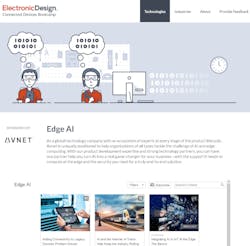Blogs are usually something you do when the urge hits and you don’t want to get your other work done. That’s what this is, because the virtual pile of stuff I have to do is getting so high I’m almost afraid to pull the stuff out from the bottom as the rest may come crashing down.
Ok, this is sort of work. I will be talking about the impact of the coronavirus on person-to-person meetings.
In-person meetings has effectively gone out the window as conference and tradeshows get cancelled right and left. Sports arenas are playing to empty stands (or nothing is playing at all) and airplanes are flying almost empty. This is a sad state of affairs, but one we have to live with for now.
Which brings me around to video conferencing. It’s often dismissed as being less useful than a real in-person meeting, which may be the case. However, at this point, we better dust off that runner-up because teleconferencing and video conferencing will be the norm for some time to come. It will be more challenging for conferences and tradeshows—online events that tried to replicate them have fallen way short.
It’s true that YouTube and webinars are more popular these days, but these are usually one-off items. Sites like Electronic Design’s own bootcamps address some of the conference-oriented aspects by grouping together topic-related webinars, whitepapers, and online resources (Fig. 1). The challenge with webinars is they tend to be more “one-way” versus the type of interaction you get face-to-face visiting a booth on the show floor.
Still, interacting remotely has improved greatly over the years. In the dark ages, I wrote a book, titled Remote LAN Connections (Fig. 2), which addressed the neat things to do with remote-control programs and whiteboards. Great stuff when you have modems or slow LANs compared to today’s internet.
Unfortunately, video-conferencing solutions are tailored for having meetings, which is good for a large segment. However, it’s not so good for replacing conferences and trade shows that are valuable regardless of what many say is a waste of time (they’re a waste for some but not everyone).
For example, Rider University followed suit with most of the higher educational arena and shut down everything including the Mercer Science and Engineering Fair I help run. We’ve turned to video conferencing to do remote judging, but we had to push that back to let students adapt as we need them to send us photos of their board. Students now get a fixed, 15-minute interview—with all of the judges for their category. It tends to be more intense than the usual way we do things, where one or two judges will interact with a student at a time and the judges are distribute around the presentation area in a similar fashion to how a trade-show floor operates.
The problem is that existing video-conferencing solutions and even versions customized for teaching aren’t tailored for general interaction like exchanging information or moving from site to site. For our science fair, we would ideally have each student with their own “conference room” and judges would have their own “conference room” that could be linked to any other conference room.
Why would anyone want to do this? Well, if the idea is to have a pair of judges working together, they would like to interact with the student and move in unison. Likewise, team projects can have multiple students and it works better if each user works from their own device such as a laptop or smartphone.
I call this approach roving conference rooms.
A more simplified view would be that everyone has their own “conference room” and then attempt to group together multiple rooms into one, probably with a leader. In our science fair case, the leader for a judge group would be able to move their group from one project to the next.
The interesting offshoot of this approach is that there’s potentially more privacy available as groups move around these virtual environments. For example, our judges could talk to each other in their roving conference after unlinking from a student’s conference to discuss what they just saw. Likewise, judges for a particular category could link up to talk about all of the projects.
The big difference between roving conference rooms and conventional video conferencing is that the latter is all about schedules where the former is ad hoc—dynamic but with an infrastructure for making connections. I think roving conference rooms (need to come up with a better name) is actually an improvement over in-person conferences in many respects and much different than some virtual approaches like Second Life, which put you into a virtual world that interacts like the real world.
Other features that this type of system might provide would be a way to manage the exchange of virtual artifacts from documents to schedules. Everything is time-stamped and organized. It now makes sense for salespeople to interact with vendors at a virtual show versus a show that’s only tuned for vendors and customers.
I think this would work rather well for a virtual conference or trade show. Tying in things like schedules, webinars, etc., might make the experience very similar to what we can’t do right now with the coronavirus pandemic.
We will have to see how remote interactions progress now that video conferencing is a requirement for many.


